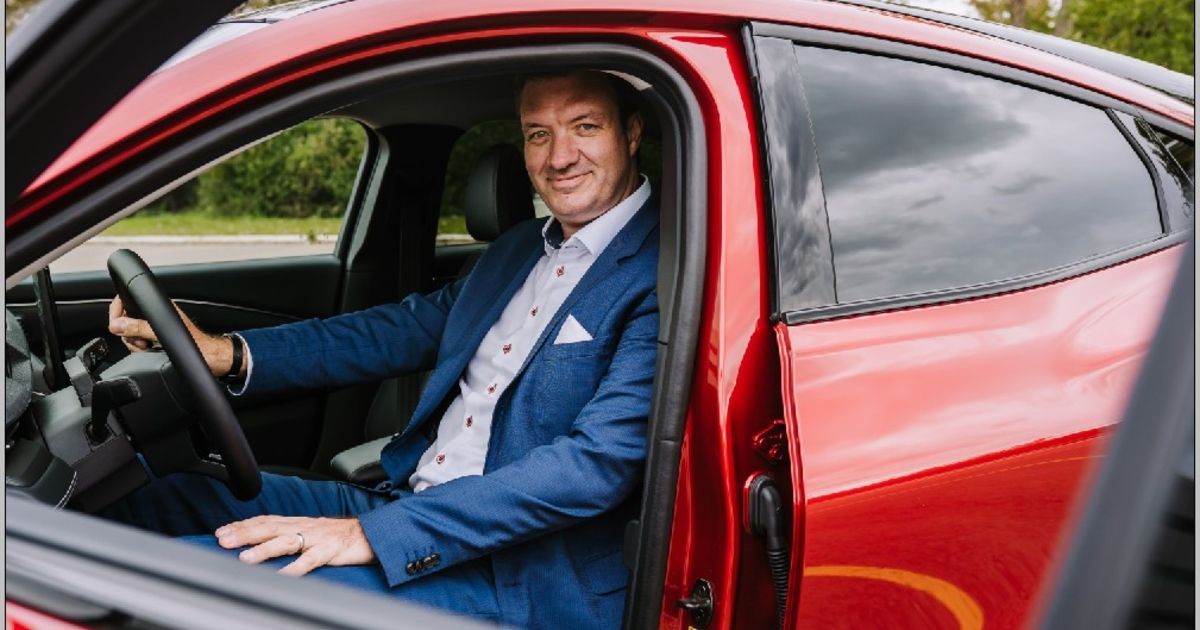
DETROIT — Ford Motor Co. has reconvened the Mustang Mach-E launch team more than a year after the EV went on sale.
The goal? Reduce costs and improve profit margins as Ford vies for a spot among the industry’s EV leaders. Ford CEO Jim Farley last week said the task force already has reduced the crossover’s bill of materials by $1,000.
“What we’re finding in Mach-E is that actually most of the exciting work starts after Job 1,” he said on the company’s fourth-quarter and full-year earnings call.
Darren Palmer, Ford’s general manager of battery-electric vehicles, said in an interview that Farley’s directive was to no longer wait to find efficiencies and implement changes only during midcycle updates or model-year changeovers.
“He said, ‘Gone. Stop that. Take that away,’ ” Palmer told Automotive News. “We now do continuous improvement. You don’t wait for a model year; you just continually drop them in.”
The task force, comprising purchasing, manufacturing and engineering teams that launched the Mach-E, studied a combination of competitive products, social media input and connected-vehicle data to eliminate $1,000 in cost, Palmer said.
One accomplishment was reducing the number of pieces in the vehicle’s frunk from nine to two. Palmer said the team benchmarked the frunk against other vehicles and found less complicated options but wanted to keep certain features that customers enjoy, such as a plastic drain.
“It’s not about stripping the car,” he said. “It’s about giving them things they love, but simpler.”
The team also realized it could save money by adding heated seats to a trim that did not originally include them: the California Route 1 edition. Ford monitored social media posts calling for the option, and it discovered through connected-vehicle data that those who did have heated seats used them often.
“It turns out people love heated seats, and they use them in an EV instead of the heated ventilation, so we standardized the heated seats and took out the other one,” Palmer said. “We got a better price because we got more volume. It was complexity reduction and building scale, which means we got them much cheaper.”
Palmer said the team simplified the vehicle’s cooling system, which Farley specifically called out on the earnings call, eliminating two of four motors and about one-third of the hoses it used.
“Those are the opportunities we’re going after,” Farley said. “And we are not going to wait for next year. We’re not going to wait for a minor change. We are going to reengineer that vehicle now and then use that expertise for Lightning, E-Transit and, of course, our all-electric platforms.”
Palmer said the unnamed task force effectively operated out of Dearborn, Mich., but also worked virtually because of the coronavirus pandemic. Unlike with traditional product development processes that would include a strict budget and numerous meetings, the task force was given wide latitude.
“The senior team would come over to the task force, walk the room with them and give agreements and immediate approval,” Palmer said. “We’d approve it there and then and go straight to production. It’s not a process we’ve ever used before.”
He declined to say whether the cost savings would be passed on to customers through lower pricing.
“Over time, our goal is to make all of our electric vehicles better and better value to get to more and more people,” he said. “Market conditions also set the prices. At the moment, there’s a huge scarcity of products, and that’s also setting the prices. We evaluate those every month as to where we are.”
Ford plans to continue the process on the F-150 Lightning, E-Transit and other upcoming EVs. Palmer said some members of the Mach-E cost-reduction task force will migrate to the other teams.
He said Ford wasn’t able to achieve these kinds of savings in the past because it didn’t have this level of insight with connected data, and that working on new types of products such as the Mach-E has prompted new ways of thinking.
“While you’re making change, it inspires more change,” he said. “It made us think about it and how we can work in a more nimble fashion than before.”